From the canals of the Netherlands to the shores of the Pacific, Royal HaskoningDHV has quietly emerged as a pivotal force in water innovation. This Dutch engineering powerhouse, with its €5.1 million annual innovation fund and strategic focus on water stewardship, is charting a unique course in the water technology landscape. By blending traditional engineering excellence with forward-thinking sustainability initiatives, they’re tackling everything from industrial water efficiency to nature-based solutions. Their approach isn’t just about solving today’s water challenges – it’s about engineering resilient water systems for generations to come.
Royal HaskoningDHV is part of my Ultimate Water Investor Database, check it out!
Investor Name: Royal HaskoningDHV
Investor Type: Family Office
Latest Fund Size: $0 Million
Dry Powder Available: No
Typical Ticket Size: <$250k
Investment Themes: Nereda technology, digital water solutions, water infrastructure
Investment History: $560000 spent over 2 deals
Often Invests Along:
Already Invested In: HAL24K, Hydroinformatics Institute (H2i)
Leads or Follows: Follow
Board Seat Appetite: Rare
Key People: Marco van der Lelij, Marije Hulshof
The Innovation Engine: Decoding HaskoningDHV’s Investment Strategy
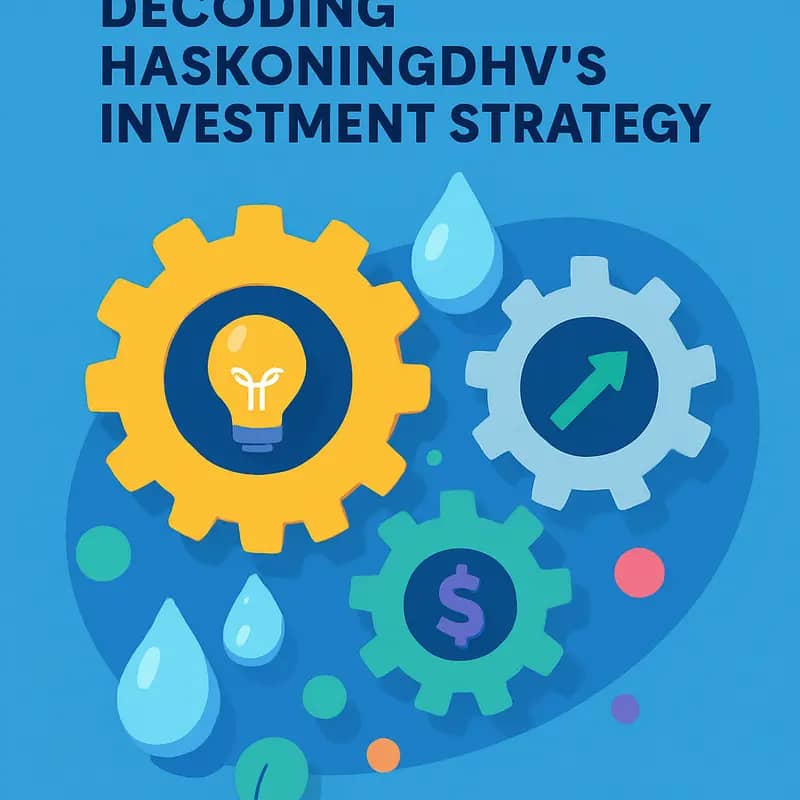
Royal HaskoningDHV’s approach to water technology investment represents a masterclass in strategic innovation management. At the heart of their strategy lies a €5.1M innovation fund, carefully structured to maximize impact while minimizing risk through a distinctive follower-position approach.
The Dutch engineering giant’s investment methodology stems from a deep understanding that water technology advancement requires collaborative efforts rather than solo ventures. Their preference for follower positions reflects this philosophy – rather than attempting to lead every initiative, they strategically align with partners who have already validated market potential, thereby reducing technological risks while maintaining significant influence in project direction.
What sets HaskoningDHV’s investment strategy apart is their three-tiered approach to funding allocation. The first tier focuses on proven technologies requiring scale-up support, typically receiving 40% of the fund’s resources. The second tier, commanding another 40%, targets technologies in late-stage development with clear market application. The remaining 20% is reserved for early-stage innovations with transformative potential.
Their collaborative framework extends beyond mere financial investment. HaskoningDHV actively engages with partners through a structured knowledge-sharing platform, ensuring that technological advances benefit from their extensive engineering expertise while maintaining independence in development. This approach has proven particularly effective in accelerating the adoption of promising water technologies across their global network.
The firm’s investment criteria emphasize solutions addressing critical challenges in water infrastructure, treatment efficiency, and sustainability. Read more about strategic water technology investment approaches. Each investment must demonstrate clear potential for scaling across HaskoningDHV’s international project portfolio, ensuring that successful innovations can quickly achieve meaningful market penetration.
Through this carefully calibrated investment strategy, HaskoningDHV has created a sustainable innovation engine that powers both technological advancement and business growth. Their approach demonstrates how strategic patience, combined with targeted support and collaborative partnerships, can drive meaningful progress in water technology development while managing investment risks effectively.
Water Stewardship: Where Engineering Meets Sustainability
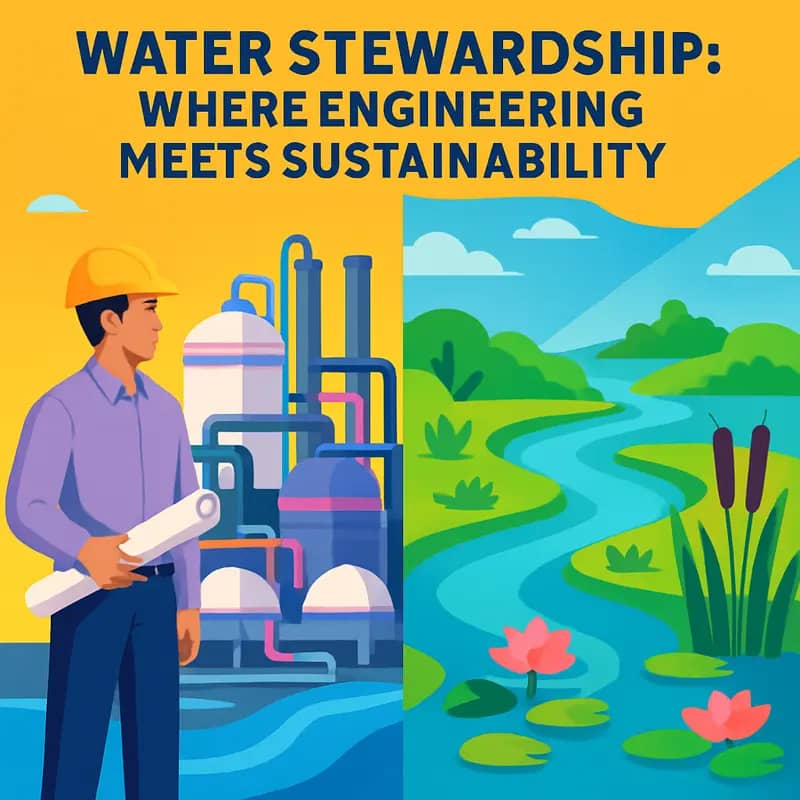
Royal HaskoningDHV’s approach to water stewardship represents a paradigm shift in how engineering firms tackle water challenges. By seamlessly blending traditional engineering excellence with nature-based solutions, the company has positioned itself at the forefront of sustainable water management.
At the core of their strategy lies a deep understanding that industrial water applications require more than just technical solutions. The company’s integrated approach combines innovative engineering with ecological considerations, creating systems that work in harmony with natural processes rather than against them.
A standout element of their methodology is the incorporation of nature-based solutions into industrial water treatment. Rather than relying solely on energy-intensive mechanical systems, HaskoningDHV leverages constructed wetlands, bioswales, and other natural treatment processes to handle industrial effluents. This approach not only reduces operational costs but also enhances biodiversity and creates additional ecosystem services.
The firm’s climate adaptation strategies demonstrate particular foresight in addressing water challenges. By recognizing that climate change will intensify water-related risks, HaskoningDHV designs systems with built-in resilience and adaptability. Their solutions often incorporate modular components that can be scaled or modified as conditions change, ensuring long-term sustainability even under uncertain climate scenarios.
Their industrial water solutions notably focus on circular economy principles. Water is viewed not as a one-time-use resource but as part of a continuous cycle. Through advanced recovery and reuse systems, industries can significantly reduce their water footprint while often recovering valuable resources from their waste streams.
The company’s commitment to nature-based solutions extends beyond mere environmental protection. These approaches often prove more cost-effective and resilient than traditional “gray” infrastructure while delivering multiple benefits to surrounding communities. For instance, their constructed wetland systems not only treat industrial wastewater but also create wildlife habitats and recreational spaces.
HaskoningDHV’s water stewardship initiatives particularly shine in their integration of digital technologies with ecological solutions. Advanced monitoring systems and predictive analytics ensure optimal performance of nature-based solutions, while real-time data enables rapid response to changing conditions. This fusion of natural processes with smart technology represents the future of sustainable water management.
Geographic Expansion: The APAC Water Technology Frontier
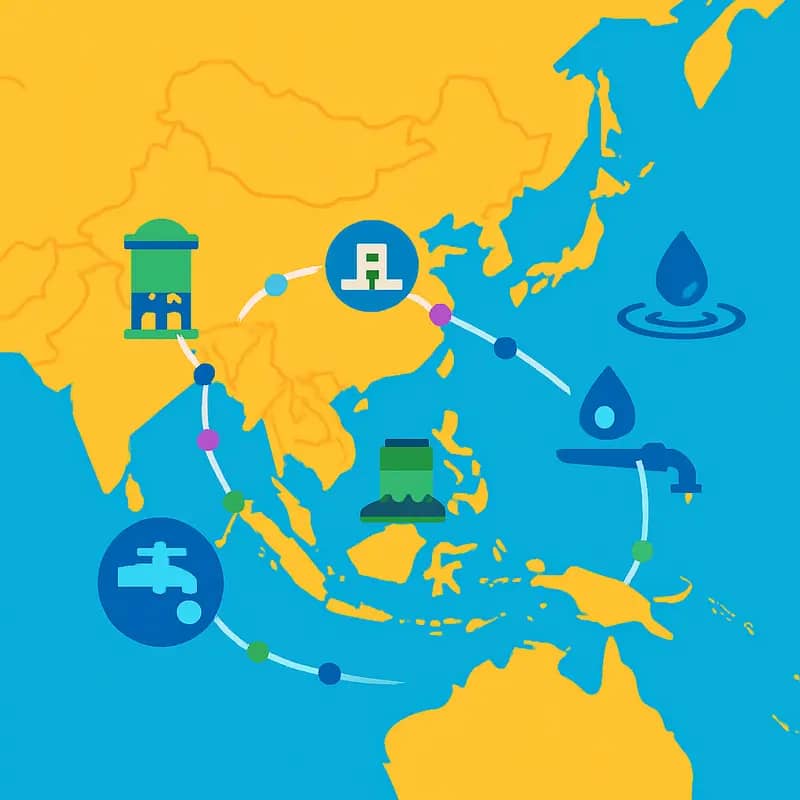
Royal HaskoningDHV’s strategic expansion across the Asia-Pacific region represents a calculated response to the region’s unique water challenges. The Dutch engineering giant has established a formidable presence by tailoring solutions to address localized needs while maintaining global quality standards.
In Pacific Island nations, the company focuses on climate resilience and sustainable infrastructure. Their integrated approach combines traditional engineering with nature-based solutions to protect vulnerable coastal communities from rising sea levels and increasingly severe storms. Climate adaptation strategies have become central to their island projects, where they work closely with local governments to develop robust water management systems that can withstand extreme weather events.
Australia presents a different set of challenges, where prolonged droughts and water scarcity demand innovative solutions. Royal HaskoningDHV has pioneered advanced water recycling initiatives and smart distribution systems across major urban centers. Their work in water-stressed regions demonstrates how engineering excellence can transform water management practices while promoting sustainable development.
New Zealand’s unique geographical and cultural landscape has led to specialized approaches that respect indigenous water rights while addressing modern infrastructure needs. The company’s projects integrate Māori water stewardship principles with cutting-edge engineering solutions, creating a model for culturally sensitive water management.
Across the broader APAC region, Royal HaskoningDHV has positioned itself as a key player in industrial water treatment and urban water infrastructure. Their success stems from an ability to adapt global expertise to local contexts while fostering knowledge transfer between regions. By establishing strong partnerships with local institutions and engineering firms, they’ve created a sustainable foundation for long-term regional growth.
The company’s approach to APAC expansion emphasizes capacity building and technology transfer. Rather than simply implementing solutions, they focus on empowering local teams and developing regional expertise. This strategy has proven particularly effective in emerging markets where sustainable water management practices are still evolving.
As explored in https://dww.show/can-nature-based-solutions-better-protect-cities-from-soaring-environmental-risks/, their integration of nature-based solutions has become increasingly crucial in urban water management across the region. The company’s projects demonstrate how engineering innovation can work in harmony with natural systems to create more resilient water infrastructure.
Future-Proofing Water: Digital Innovation and Climate Resilience
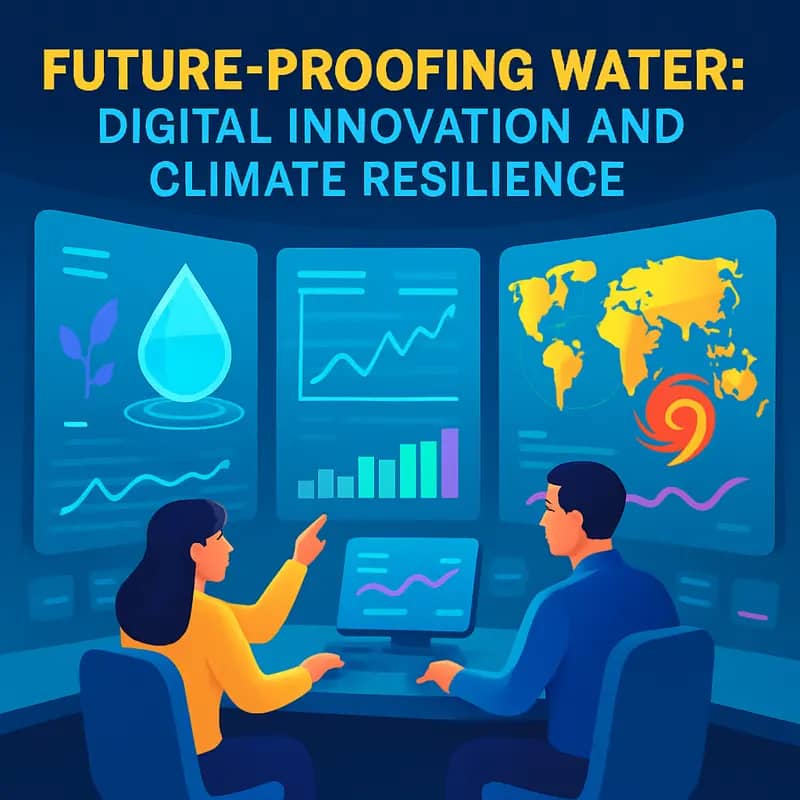
Royal HaskoningDHV’s pioneering approach to water management interweaves digital transformation with climate resilience strategies, creating a blueprint for sustainable water infrastructure. By leveraging advanced analytics and IoT sensors, the company has revolutionized how water utilities monitor, predict, and optimize their operations.
At the core of their digital strategy lies a sophisticated data ecosystem that processes millions of data points from distributed sensors across water networks. This enables real-time monitoring of water quality, flow rates, and infrastructure health while predicting potential failures before they occur. Through machine learning algorithms, these systems can automatically adjust treatment processes, reducing energy consumption by up to 25% while maintaining optimal water quality.
The company’s climate resilience initiatives focus on developing adaptive infrastructure that can withstand increasingly extreme weather events. Their innovative designs incorporate natural systems and green infrastructure, working in harmony with traditional engineering approaches. For instance, their urban water management solutions combine traditional drainage systems with bioswales and retention ponds, creating multi-functional spaces that manage stormwater while enhancing biodiversity.
A cornerstone of their strategy involves implementing circular water systems that dramatically reduce both water consumption and carbon emissions. By treating wastewater to higher standards and enabling water reuse, these systems can cut freshwater demand by up to 40% in industrial applications. The company has also pioneered energy-neutral treatment processes that harness biogas from waste streams, effectively turning treatment plants from energy consumers into power generators.
Recognizing that digital transformation must serve practical outcomes, Royal HaskoningDHV has developed decision support tools that help utilities make informed choices about infrastructure investments. These tools model various climate scenarios and their impacts on water systems, enabling organizations to prioritize the most resilient and cost-effective solutions for their specific contexts.
Significantly, the company’s approach extends beyond technological solutions to encompass comprehensive stakeholder engagement and knowledge transfer. They work closely with local communities and water professionals to build capacity and ensure long-term sustainability of their solutions. This participatory approach has proven crucial in achieving lasting positive impacts across diverse geographical and cultural contexts.
Leading by example, Royal HaskoningDHV has committed to ambitious internal sustainability targets, including a 50% reduction in their operational carbon footprint by 2030. This commitment drives innovation in their project delivery methods and encourages the development of increasingly sustainable solutions for their clients.
As explored in their approach to leveraging water risk assessment to unlock business opportunities, the company’s integrated strategy demonstrates how digital innovation and climate resilience can create both environmental and economic value, setting new standards for the water industry’s future.
The Power of Self-Funded Innovation

Royal HaskoningDHV’s unique position as an employee-owned engineering consultancy fundamentally shapes its approach to water technology innovation. This ownership structure creates a powerful alignment between long-term strategic interests and investment decisions, enabling the company to pursue groundbreaking solutions without external pressure for quick returns.
The company’s reinvestment model channels a significant portion of annual profits directly back into research and development initiatives. Unlike publicly traded companies that must balance shareholder dividends with innovation funding, Royal HaskoningDHV’s employee-owners consistently prioritize technological advancement that delivers sustainable value. This self-funding approach mirrors the principles outlined in understanding how to invest wisely in water technologies.
This financial independence creates a distinct innovation ecosystem within the organization. Engineering teams can pursue ambitious multi-year development projects, knowing that funding won’t suddenly disappear due to market fluctuations or changing investor priorities. The result is a more thorough approach to technology development, where concepts can be refined through multiple iterations before commercialization.
The employee ownership model also fosters a unique innovation culture. Engineers and researchers have a personal stake in the success of new technologies, leading to higher engagement and more creative problem-solving. This ownership mentality extends beyond individual projects to encompass the company’s broader mission of advancing sustainable water solutions.
The self-funded structure enables Royal HaskoningDHV to maintain strategic focus on long-term challenges in water treatment. Rather than chasing quick wins or following market trends, the company can dedicate resources to fundamental research that addresses core industry challenges. This approach has proven particularly valuable in developing breakthrough biological treatment processes and smart water management systems.
Moreover, the company’s reinvestment strategy creates a virtuous cycle. Successful innovations generate revenue that funds future research, while the employee ownership structure ensures that technological advances benefit those who helped create them. This alignment of interests has proven crucial in maintaining the company’s position at the forefront of water technology innovation.
The impact of this self-funded model extends beyond individual innovations to influence industry-wide practices. By demonstrating the viability of long-term research investment in water technology, Royal HaskoningDHV has helped establish new standards for sustainable technology development in the water sector.
Nereda: A Case Study in Organic Growth

Royal HaskoningDHV’s development of aerobic granular sludge technology exemplifies how internal funding and strategic partnerships can drive breakthrough innovation in water treatment. Building on decades of research collaboration with Delft University of Technology, the company recognized the transformative potential of this novel biological treatment process.
The journey began with fundamental research into bacterial growth patterns and granulation mechanisms. Through methodical laboratory testing and pilot studies, the engineering team gradually optimized the process conditions that promote the formation of dense, fast-settling microbial granules. This biological aggregation enables dramatic improvements in treatment efficiency while reducing plant footprint requirements by up to 75%.
Critically, Royal HaskoningDHV maintained full control over the technology’s development by relying on internal funding rather than external investment. This autonomy allowed the team to take a long-term view, methodically advancing through research and demonstration phases without pressure for premature commercialization. The company invested over €12 million of its own resources across a 20-year development timeline.
Strategic partnerships played an equally vital role in bringing the technology to market. Early adopter utilities in the Netherlands provided real-world testing grounds, while academic collaborations helped validate performance claims through peer-reviewed research. These partnerships built credibility while generating valuable operational data.
The measured approach paid off as successful full-scale implementations demonstrated the technology’s advantages. Treatment plants in Ireland, Portugal, and South Africa validated performance across diverse conditions. Each new installation generated performance data that helped secure additional projects.
Today, with over 90 projects completed or under construction across multiple continents, Nereda exemplifies how to bring innovation to market faster and more reliably. The technology’s success validates Royal HaskoningDHV’s strategy of maintaining control through internal funding while leveraging strategic partnerships to accelerate market adoption.
This organic growth model enabled the company to retain full intellectual property rights while building deep expertise across its engineering teams. The approach demonstrates how patient capital investment combined with strategic collaboration can translate breakthrough science into transformative water treatment solutions.
Strategic Partnerships Over Venture Capital

Royal HaskoningDHV’s distinctive approach to innovation funding relies on strategic partnerships rather than traditional venture capital routes. This methodology stems from a deep understanding that water technology development requires more than just financial backing—it demands technical expertise, real-world testing environments, and established market channels.
The company has systematically built an ecosystem of research institutions, universities, and industry partners that extends far beyond simple financial relationships. These partnerships provide critical advantages: access to specialized research facilities, opportunities for pilot testing in real operating conditions, and pathways to early adopters in various markets.
A prime example is the company’s long-standing collaboration with Delft University of Technology, which has yielded breakthrough developments in water treatment technologies. This partnership model enables Royal HaskoningDHV to maintain strategic control while leveraging external expertise and resources.
The company’s partnership strategy follows three core principles. First, partnerships must align with long-term strategic objectives rather than short-term financial gains. Second, relationships should be mutually beneficial, with clear value propositions for all parties involved. Third, partnerships must maintain operational flexibility, allowing for adaptation as market conditions and technological requirements evolve.
This approach has proven particularly effective in navigating the complex water technology landscape. Unlike venture capital funding, which often demands rapid scaling and quick returns, strategic partnerships allow for more measured development cycles aligned with the water sector’s inherent timelines. This patient capital approach enables thorough testing and validation, crucial for technologies that must perform reliably for decades.
The financial benefits of this strategy are notable. By reinvesting profits and leveraging partner resources, Royal HaskoningDHV maintains independence in its innovation trajectory. This self-funded growth model, supported by strategic partnerships, has enabled the company to develop transformative technologies while retaining full control over their commercialization.
Moreover, the partnership approach has created a robust knowledge network that continuously feeds into the company’s innovation pipeline. This ecosystem of expertise has proven more valuable than pure financial investment, as it provides both technical insights and market understanding that money alone cannot buy.
Lessons for Water Entrepreneurs
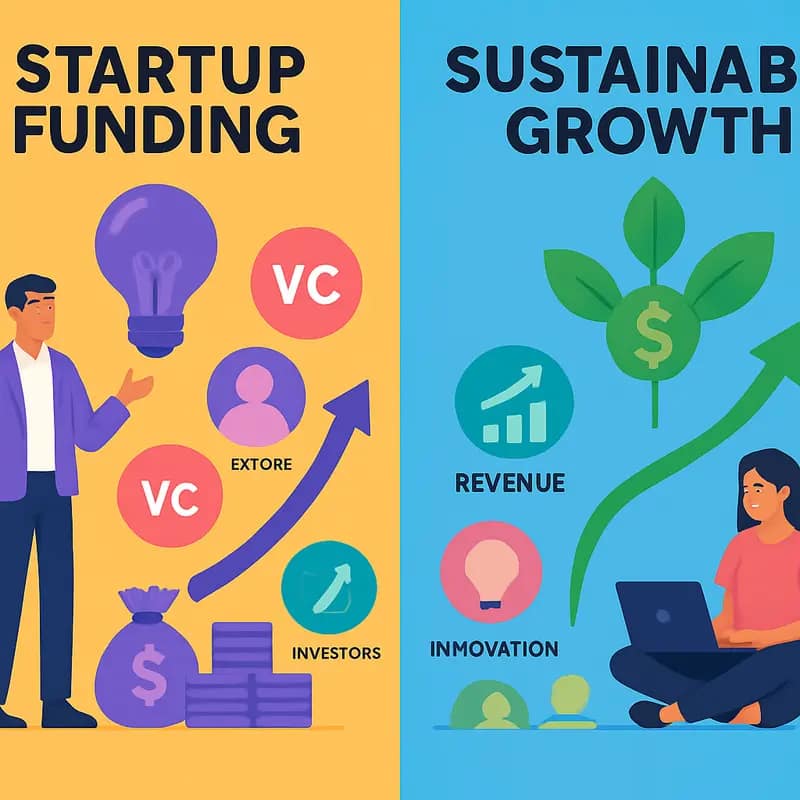
Royal HaskoningDHV’s growth trajectory offers invaluable insights for water entrepreneurs navigating the complex landscape of funding and innovation. Their success stems from a distinctive approach that prioritizes sustainable growth over rapid scaling.
The company’s first key lesson is the power of patient capital. Rather than chasing quick returns through venture funding, Royal HaskoningDHV demonstrates how maintaining operational independence enables long-term vision and technical excellence. This approach allows entrepreneurs to focus on solving complex water challenges instead of meeting aggressive growth targets.
A second critical lesson lies in their hybrid funding model. By combining revenue from established engineering services with targeted investments in water technology development, they’ve created a self-sustaining innovation engine. This model provides a steady cash flow while enabling calculated risks in emerging technologies – a strategy particularly relevant for entrepreneurs seeking to balance stability with innovation.
Their experience also highlights the importance of strategic commercialization. Royal HaskoningDHV’s practice of extensively testing and validating technologies before market entry, though time-consuming, significantly reduces implementation risks. Water entrepreneurs can learn from this methodical approach to product development and market introduction.
The company’s success in forming value-chain partnerships offers another crucial lesson. Instead of viewing potential competitors as threats, they’ve created collaborative networks that accelerate technology adoption. This ecosystem approach has proven particularly effective in the water sector, where market entry barriers are notably high.
Perhaps most significantly, Royal HaskoningDHV’s model demonstrates the importance of aligning business growth with environmental impact. Their focus on solutions that address both commercial and sustainability objectives has created a resilient business model that attracts both customers and partners.
Entrepreneurs should note how the company leverages its engineering expertise to validate new technologies, effectively reducing investment risks. This technical credibility has proven invaluable in securing both project funding and customer trust.
Finally, their approach to intellectual property management offers valuable insights. Rather than hoarding patents, they’ve adopted a collaborative innovation model that accelerates market adoption while maintaining competitive advantages through implementation expertise.
These lessons collectively point to a more sustainable path for water technology commercialization – one that prioritizes long-term impact over short-term gains.
Digital Twins: The Virtual Blueprint of Water Systems

Royal HaskoningDHV has revolutionized water infrastructure management through sophisticated digital twin technology that creates virtual replicas of complex water systems. These digital twins serve as living, breathing models that mirror physical infrastructure in real-time, enabling unprecedented levels of monitoring and predictive capabilities.
At its core, the technology creates a dynamic virtual representation that continuously updates based on data from sensors, meters, and other IoT devices distributed throughout the water network. This comprehensive data integration allows operators to visualize and analyze the entire system’s performance from a central dashboard, transforming how utilities manage their infrastructure.
The real power of digital twins lies in their predictive capabilities. By applying advanced analytics to historical and real-time data, the system can forecast potential issues before they become critical problems. For example, the technology can detect subtle changes in pump performance that might indicate impending failure, allowing maintenance teams to address issues proactively rather than reactively. This predictive maintenance approach has demonstrated reductions in operational costs of up to 30% while significantly improving system reliability.
Beyond maintenance, digital twins enable sophisticated scenario planning and optimization. Operators can simulate different operational strategies in a risk-free virtual environment before implementing changes in the real world. This capability proves particularly valuable when planning system upgrades or responding to emergency situations, where the stakes are too high for trial and error.
The technology’s impact extends to resource efficiency as well. By providing detailed insights into water flow patterns, energy usage, and treatment processes, digital twins help utilities optimize their operations for maximum sustainability. Real-world implementations have shown significant reductions in energy consumption and chemical usage while maintaining or improving water quality standards.
As climate change and urbanization place increasing pressure on water infrastructure, the role of digital twins becomes even more critical. The technology enables utilities to build resilience into their systems by modeling various climate scenarios and testing adaptation strategies virtually. This forward-looking approach helps ensure infrastructure investments deliver maximum value and sustainability for communities.
The integration of this technology with existing water infrastructure continues to evolve, as discussed in How to cleverly embrace the digital craze in the water industry (https://dww.show/how-to-cleverly-embrace-the-digital-craze-in-the-water-industry/). As artificial intelligence and machine learning capabilities advance, the next frontier lies in developing even more sophisticated pattern recognition capabilities that will further enhance the predictive power of digital twin systems.
AI-Powered Pattern Recognition in Water Networks

Building upon their digital twin infrastructure, Royal HaskoningDHV has revolutionized water network monitoring through sophisticated machine learning algorithms that detect subtle patterns in massive datasets. These AI systems analyze multiple data streams simultaneously – from flow rates and pressure readings to water quality parameters and infrastructure vibration patterns.
The company’s pattern recognition capabilities operate at unprecedented scale, processing millions of data points per second to identify anomalies that human operators would likely miss. By detecting microscopic changes in water pressure, chemical composition, or equipment performance, the system can flag potential issues days or even weeks before they manifest as actual failures.
At the heart of this innovation is a neural network architecture specifically trained on water utility data. The system continuously learns from both normal operations and past incidents, building an ever-more-refined understanding of what constitutes typical versus problematic patterns. When analyzing pressure data, for instance, the AI can distinguish between normal daily fluctuations and the subtle signatures of developing leaks.
A particularly powerful application has been in predictive maintenance. By correlating multiple subtle indicators – such as minor changes in pump vibration patterns, slight increases in energy consumption, and microscopic variations in water quality – the system can identify equipment that’s likely to fail well before traditional monitoring would detect any issues. This capability has helped utilities reduce emergency repairs by up to 65% while extending infrastructure lifespan.
The system also excels at detecting patterns across different timescales, from rapid pressure transients that occur in milliseconds to gradual changes that develop over months. This multi-scale analysis has proven especially valuable for identifying slow-developing issues like pipe corrosion or gradual shifts in water demand patterns that could impact long-term infrastructure planning.
Beyond operational benefits, this AI-driven approach has transformed how utilities manage water quality. The system can detect subtle chemical variations that might indicate contamination events or treatment process issues, enabling rapid response before water quality problems affect consumers. These capabilities align perfectly with broader industry efforts to enhance water safety and reliability through data-driven operations.
Perhaps most remarkably, Royal HaskoningDHV’s AI systems have begun identifying complex interconnections between seemingly unrelated parameters, unveiling new insights about water network behavior that are reshaping fundamental assumptions about system optimization and management. This deep pattern recognition capability isn’t just preventing failures – it’s advancing our understanding of how water infrastructure actually functions.
Sustainable Solutions for Urban Water Management

Royal HaskoningDHV’s innovative approach to urban water management seamlessly integrates cutting-edge engineering with ecological principles, creating resilient systems that work in harmony with nature. Building on their AI-powered analytics capabilities, the company has pioneered hybrid solutions that combine traditional infrastructure with green technologies to handle increasing urban water challenges.
At the core of their strategy lies the implementation of smart drainage networks that dynamically respond to weather patterns and urban development. These systems utilize real-time monitoring and automated controls to optimize water flow, preventing floods while maximizing water retention for dry periods. The integration of permeable surfaces and bioswales creates natural filtration pathways, reducing the burden on traditional stormwater infrastructure while improving water quality.
Particularly noteworthy is Royal HaskoningDHV’s development of nature-based solutions that transform urban landscapes into water-management assets. Rain gardens and constructed wetlands serve dual purposes – managing stormwater runoff while creating vibrant community spaces. These green infrastructure elements can process up to 30% more water volume than conventional systems while reducing maintenance costs by roughly 25%.
The company’s holistic approach extends to groundwater management, where they’ve pioneered aquifer storage and recovery systems that work in concert with surface water solutions. This integrated strategy helps cities maintain water table levels while providing emergency reserves during droughts. By mimicking natural hydrological cycles, these systems enhance urban water resilience while supporting local ecosystems.
A standout feature of Royal HaskoningDHV’s methodology is their focus on scalable solutions that can adapt to various urban contexts. From dense city centers to expanding suburbs, their modular approach allows municipalities to implement sustainable water management incrementally, making the transition both technically and financially feasible. This adaptability has proven crucial for cities facing diverse water challenges across different neighborhoods and development phases.
The economic benefits of these integrated solutions are substantial. Cities implementing Royal HaskoningDHV’s sustainable water management systems have reported significant reductions in flood damage costs and decreased spending on traditional infrastructure maintenance. Moreover, these nature-based solutions contribute to urban biodiversity and create healthier living environments, demonstrating how ecological engineering can deliver multiple returns on investment.
Investment Opportunities in Digital Water Solutions

Royal HaskoningDHV’s strategic push into digital water solutions presents compelling investment opportunities across multiple market segments. The company’s integration of artificial intelligence, IoT sensors, and advanced analytics into water infrastructure management has opened new avenues for both financial returns and environmental impact.
The digital water solutions market is projected to reach $30 billion by 2025, with smart water management systems showing particularly strong growth potential. Royal HaskoningDHV’s initiatives in this space focus on three key investment areas: predictive maintenance systems, real-time water quality monitoring, and integrated watershed management platforms.
For impact investors, the company’s digital solutions demonstrate attractive ROI metrics while addressing critical sustainability challenges. Pilot projects implementing smart sensors and AI-driven optimization have shown 15-30% reductions in operating costs and 20-40% improvements in resource efficiency. These results translate to typical payback periods of 2-4 years for major infrastructure upgrades.
Partnership opportunities exist for entrepreneurs and technology providers in several high-growth segments. The company actively seeks collaborations in areas such as advanced sensing technologies, machine learning applications, and cloud-based analytics platforms. Their open innovation approach provides multiple entry points for startups and established tech firms to integrate their solutions into larger water management systems.
A particularly promising area involves digital twin technology for water infrastructure. These virtual replicas of physical assets enable sophisticated scenario planning and optimization, with early adopters reporting 25% reductions in maintenance costs and 15% improvements in operational efficiency. Investors can participate through direct investment in technology development or through structured partnerships focusing on specific market applications.
Risk factors to consider include cybersecurity concerns, regulatory compliance requirements, and the need for standardization across different water management systems. However, Royal HaskoningDHV’s established presence in the water sector and strong relationships with municipal utilities help mitigate these risks while providing clear pathways to market.
The company’s commitment to sustainable development goals further enhances the appeal for ESG-focused investors. Their digital solutions directly contribute to water conservation, energy efficiency, and climate resilience objectives, creating multiple value streams beyond pure financial returns.
As explored in detail at https://dww.show/how-to-cleverly-embrace-the-digital-craze-in-the-water-industry/, successful digital transformation in the water sector requires strategic alignment of technology, operations, and investment approaches. Royal HaskoningDHV’s integrated framework provides investors with clear metrics for evaluating opportunities and measuring impact across their digital water portfolio.
Final words
Royal HaskoningDHV’s approach to water technology and investment represents a distinctive blend of engineering pragmatism and innovative vision. Their €5.1 million annual innovation fund, while modest compared to pure venture capital players, demonstrates a strategic commitment to advancing water technology solutions. The company’s preference for follower positions in investments, coupled with their strong focus on collaboration, reveals a measured approach that prioritizes sustainable impact over rapid scaling.
Their geographic focus on the Asia-Pacific region positions them at the frontier of some of water technology’s most pressing challenges and opportunities. By combining traditional engineering excellence with nature-based solutions and digital innovation, they’re creating a template for how engineering firms can evolve to meet 21st-century water challenges.
For water entrepreneurs and impact investors, Royal HaskoningDHV represents more than just another player in the water technology space – they embody a new model of strategic innovation that balances commercial viability with environmental stewardship. Their success suggests that the future of water technology investment may lie not in disruptive moonshots, but in methodical, collaborative approaches that build upon proven engineering expertise while embracing sustainable innovation.
Wanna explore the Full List of Water Investors that cut at least two checks over the past decade? Check it out and bookmark it, I update it regularly!
Learn more: https://dww.show/the-ultimate-water-investor-database/
About us
Through my “(don’t) Waste Water” platform, I offer unique and insightful coverage of the water industry that combines technical expertise with engaging storytelling. If you haven’t yet, it might be time for you to subscribe to the podcast, the youtube channel and/or the newsletter!
